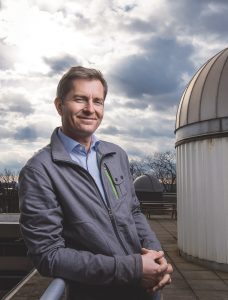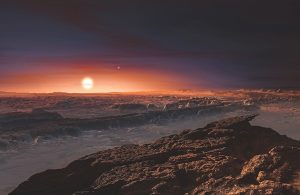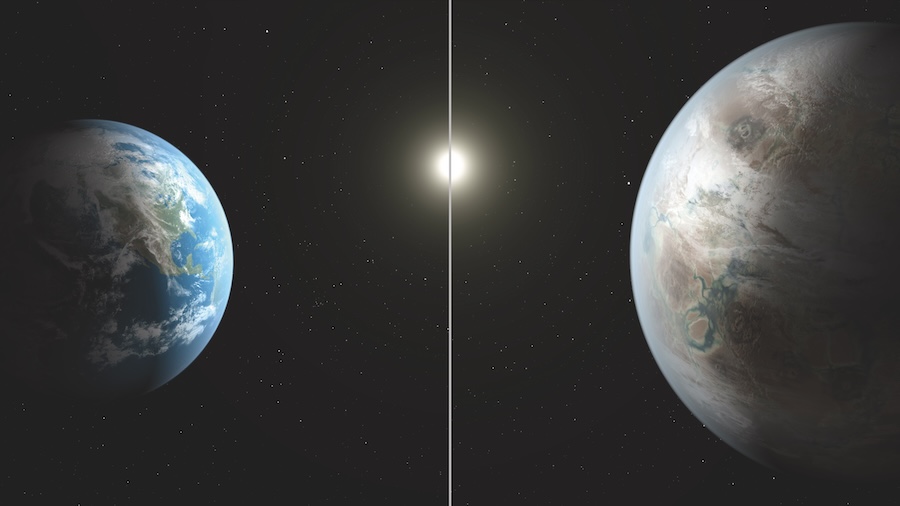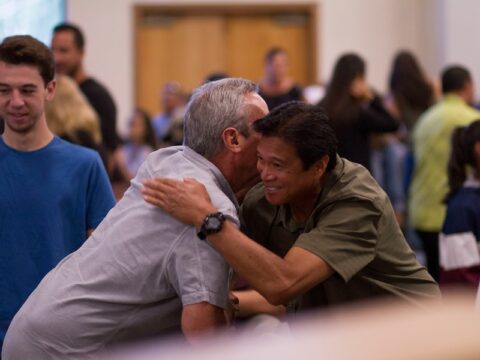In the summer of 1999, David Charbonneau, a Canadian studying at Harvard University, bought a cheap used car and drove from Cambridge, Mass., to Boulder, Colo., where he planned to do research for a doctorate in astronomy. The 25-year-old Charbonneau didn’t know it, but he was headed toward a rendezvous with history.
Charbonneau had arranged to work with Tim Brown, an astronomer in Boulder and a pioneer in the hunt for exoplanets — planets orbiting stars beyond our solar system. Brown and others concluded they had discovered early evidence of exoplanets by measuring tiny wobbles in the light emitted by stars; the wobbles, they reasoned, were caused by planets flexing their gravitational muscles. The findings met with mixed reviews in astronomy circles. One faction hailed it as a thrilling new chapter in humanity’s understanding of the universe. Another urged caution: the wobbles might be caused by phenomena unrelated to far-off planets.
You may unsubscribe from any of our newsletters at any time.
The race was on to confirm what the wobbles suggested. Brown had helped to build a small but sophisticated telescope for a new method of planet hunting. The instrument could register the eclipse-like dimming of the light from stars if large planets crossed in front of them — or in astronomy-speak, transited. Over 10 nights late that summer, Charbonneau and his collaborators trained the telescope on a sun-like star 150 light years away that seemed like a good transit candidate.
Later, analyzing data from a night when they expected a transit to occur, Charbonneau and his colleagues noted a conspicuous dimming of the star lasting several hours. Data from a second night revealed the same thing. The upshot: they had detected the first exoplanet using the transit method, and in doing so laid to rest any lingering doubts about the existence of planets beyond our solar system and the validity of earlier observations based on the wobble approach. Furthermore, the transit data yielded, for the first time, a glimpse of an exoplanet’s vitals, including its radius, mass, density, surface gravity and temperature — all this from a planet born billions of years ago, travelling in light waves that had taken a century and a half to reach Charbonneau’s telescope. His team determined that exoplanet HD209458b is big, like Jupiter, and really, really hot.

Initially, Charbonneau fretted that he might have made a miscalculation, not history. “It’s actually a very uncomfortable process,” he says. “Nobody’s ever seen this thing before, and you have all this doubt — am I just seeing what I want to see?” His qualms dissolved when he saw that the second batch of data matched the first. His thesis adviser called Charbonneau’s discovery “a watershed event that will change the face of research into extrasolar planets forever.”
Charbonneau returned to HD209458b two years later, this time leading a team that used the Hubble Space Telescope to confirm for the first time that exoplanets have atmospheres. The implications were huge: with the right instruments, it would be possible to look for chemical markers in exoplanet atmospheres that might point to the highest hope of astronomy: evidence of life beyond Earth.
Advances since those breakthroughs 25 years ago have been breathtaking. The exoplanet business is booming. NASA, the American space agency, keeps a running tally — like a stock ticker — of confirmed exoplanets. The number topped 5,500 early this year; a further 7,000 are under investigation. Dozens are located in “Goldilocks zones” around stars where temperatures are conducive to liquid water. Where there’s water, there might be life — or at least life as we know it on Earth.
Future historians may view today’s planet hunters as 21st-century analogues to the world-changing maritime explorers of the 15th and 16th centuries. Instead of uncharted continents or trade routes, astronomers are discovering new worlds that may hold the answer to one of the oldest and most momentous questions of all: is there life out there? Many believe it’s just a matter of time before the answer is discovered to be yes. But that would raise another big question, one that can’t be addressed with a telescope: what would learning that mean for everyday Earthlings?
Charbonneau chose Harvard’s doctoral astronomy program partly on the recommendation of his friend and fellow University of Toronto graduate Sara Seager, who was there finishing a PhD dissertation on exoplanets and stellar radiation.
Seager grew up in Toronto not far from the U of T campus. Her love affair with the night sky began on a wilderness camping trip with her family when she was 10. At 16, she bought her first telescope with money she earned running a carnival game at the Canadian National Exhibition.
Today, Seager is a professor of planetary science and physics at the Massachusetts Institute of Technology (MIT), and regarded as one of the world’s foremost astrophysicists. Like Charbonneau, Seager is a first-generation exoplanet explorer whose staggering list of accomplishments is best summed up in the fact that an asteroid was named in her honour.
Dubbed “an astronomical Indiana Jones” by NASA, Seager was an outlier when she threw herself into the nascent science of planet hunting in the late 1990s. “In the old days, almost nobody was in the field,” she recalls from her home near Boston on a crisp day last autumn. “You had to be a real loner who is able to work on your own and pioneer new things.”
More on Broadview:
Fast-forward 25 years. Driven by existing discoveries and the promise of many more to come as tools for exploring the heavens improve, planet hunting is no longer the domain of loners; it’s now staunchly mainstream — so much so that Seager says there’s more appetite for exoplanet research than there is satellite time. Projects differ, but the common denominator in almost all of them, Seager’s included, is the impulse to find signs of extraterrestrial life — and perhaps to be first across the finish line. “The number of people today who claim that it’s their life’s goal has grown tremendously,” she says. A blue-ribbon science panel in the United States recently identified the quest for habitable planets as a top research priority for the next decade.
So is the holy grail within reach?
At the moment, the overwhelming bulk of research involves probing exoplanet atmospheres for biosignatures — telltale molecules that hint at biological activity. But when planets are trillions of kilometres away, scientists can’t simply reach out and grab a handful of atmosphere. Instead, using a technique called transmission spectroscopy that Seager helped to develop, they unpack the starlight passing through a planet’s atmosphere to create an image like a barcode. They know that certain molecules will cause gaps at specific places in the barcode. What gets the adrenalin pumping are gaps suggesting the presence of molecules such as water vapour, carbon, oxygen and methane, on a planet residing in the Goldilocks zone.
René Doyon takes it all in from a seat in the front row. A professor of physics at l’Université de Montréal and director of the university’s exoplanet research program, Doyon is also the lead hand for Canada’s participation in the James Webb Space Telescope (JWST), a role that dates back more than two decades and culminated in the launch of the satellite from French Guiana on Christmas Day 2021. On hand for the launch, Doyon says it felt like letting go of a child as he watched the rocket carrying the telescope soar into space. “When the telescope separated from the rocket,” he says, “that was a major moment. It was really magical. Lots of emotion.” No doubt Doyon felt he’d come a long way from peering at the night sky through a small telescope in the backyard of his boyhood home in Thetford Mines, Que.
Doyon oversaw the development of two key components on the JWST: a guidance sensor that allows the satellite to lock on to stars in deep space; and a sophisticated spectrograph for spotting distant galaxies as well as detecting, observing and analyzing exoplanets and the light that filters through their atmospheres.
To date, most discoveries of Earth-like planets orbiting sun-like stars have been made by ground-based telescopes or satellites that predate the JWST, such as NASA’s now-mothballed Spitzer and Kepler space telescopes, the joint NASA-MIT Transiting Exoplanet Survey Satellite (another of Seager’s feats) and the tireless Hubble, now in its 34th year of operation. Three of the more intriguing examples:
- Kepler-452b, the first Earth-like planet, discovered in 2015. It’s 1,400 light years away and rocky, like Earth, larger than Earth and orbits a star similar to our sun for a period just 20 days longer than one Earth year.
- Kepler-1649c, located 300 light years away in a habitable zone. Of all the exoplanets discovered by the Kepler Space Telescope during its nine years of operation, it’s considered the most similar to Earth in size and estimated temperature.
- TRAPPIST-1e, one of seven planets orbiting a star 40 light years away. It’s smaller than Earth but receives about the same amount of light from its star as Earth does. If it has an atmosphere, it might retain enough heat to support liquid water.
With its gold honeycomb mirrors gathering light from unimaginably distant sources, and the most advanced instrumentation ever launched into space bouncing data back to scientists 1.5 million kilometres away on Earth, the JWST heralded a new era of exoplanet exploration when it went online in July 2022. Last year, a team from Cambridge University made one of the most tantalizing discoveries yet when they pointed the JWST’s spectrograph at a possibly watery planet, K2-18b, 110 light years from Earth. The planet’s atmosphere had previously been probed by Hubble, but the JWST’s higher resolution gear produced data that suggested a molecule called dimethyl sulfide. On Earth, dimethyl sulfide is only produced by biological activity, in particular, phytoplankton, a kind of microscopic waterborne algae. Could K2-18b be harbouring something similar? If so, it would be the first hint of life detected beyond our blue planet. The data proved inconclusive, but the possibility that the team had detected something significant sent the researchers scurrying to secure more telescope time.
Earth’s closest known potentially habitable neighbour is an exoplanet called Proxima Centauri b, 4.2 light years away. It’s probably lifeless, but if we were tempted to check it out for ourselves, we’d be in for a long trip — using current technology, it would take about 6,300 years to get there. Extraterrestrial life, if it’s ever discovered, will be revealed in lines of computer code or plots on a graph. It’s unlikely humans will ever actually lay eyes on it.
**

But what if extraterrestrial life comes looking for us? That’s the question that’s driven researchers in the SETI (Search for Extraterrestrial Intelligence) movement for the last 40 years. Instead of a one-way quest for signs of life beyond Earth, SETI scientists, like the Jodie Foster character in the 1997 movie Contact, search for radio and laser signals that might be signs of intelligent life reaching out from a distant corner of the universe. The SETI version of the holy grail has not turned up yet, but researchers soldier on, inspired by a 1961 equation developed by pioneer Frank Drake while he was in charge of the Green Bank radio telescope in West Virginia. Drake’s equation suggested a high probability of advanced civilizations existing among the 100 billion stars in the Milky Way — not to mention the estimated two billion trillion stars elsewhere in the universe, and the 700 quintillion — that’s 700,000,000,000,000,000,000 — planets that could be orbiting them.
SETI researchers have faced their share of scorn over the years. With sneers of “little green men” and “Martian hunting season” echoing through the corridors of the U.S. Congress, SETI was at the mercy of inconsistent federal funding until it was cut loose entirely in 1993. It has been privately funded ever since.
Today, SETI enjoys more credibility, in part thanks to the explosion of exoplanet discoveries. It employs 100 full-time scientists at the SETI Institute near San Francisco. Prestigious schools such as the University of California at Berkeley and Pennsylvania State University run SETI research programs.
SETI’s ranks also include affiliate scientists from other schools in the United States and abroad, and countless freelancers working in a citizen-science program that provides home astronomers with access to a vast trove of radio telescope data. A 21-year-old U of T math and physics undergraduate made headlines last year after he and some colleagues published a paper in Nature Astronomy describing an artificial intelligence algorithm he built to isolate “signals of interest” from deep space amid the clatter of human and naturally occurring radio noises picked up by radio telescopes.
Peter Ma had built the algorithm for a Grade 12 science project and refined it during the COVID-19 lockdowns. Working from home and aided by SETI researchers he contacted, Ma winnowed 115 million morsels of data from the Green Bank radio dish in West Virginia down to eight signals overlooked in previous analyses.The breakthrough came one evening in his bedroom as Ma watched data unspool like a video on his computer screen. “I’d just hit ‘play’…and I’d be like, ‘Oh, hey, that looks nice, really cool, really clean.’…Everything kind of came all at once.”
The eight unusual signals appear to have come from five different star systems between 30 and 90 light years away. Subsequent observations have failed to detect them again. But Ma’s invention gives SETI a new tool for listening to the heavens. And it almost certainly guarantees Ma a place in the next generation of astronomy’s heavy hitters.
**
Christopher Columbus set out from Spain in 1492 with the goal of blazing a westward sea route to the riches of the Orient. The first thing he discovered when he landed on an island in what is now the Bahamas, thinking it was the East Indies, was life — Indigenous Taíno people watching as he claimed the island for Spain. In his journal, he called them “the best people in the world, and the gentlest.” Then he and the explorers who followed him proceeded to kidnap, enslave, rape, slaughter and sicken them with European diseases. Within 50 years, the Taíno were all but wiped out.
Great discoveries have great consequences. Detecting life beyond Earth would be very big news — arguably the biggest ever — and would assure the scientists who discovered it a place in history.
Then what?
The short answer is that no one really knows. For all the energy, resources and brain power being spent on the search for life elsewhere, precious little thinking has gone into what it would mean for mortal non-scientists to learn that life on our planet is neither unique nor special. The issue raises a galaxy of philosophical, moral, theological and political questions that have largely been sidestepped amid the frenzy of discovery.
Any such discussions have mostly been confined to the SETI community. In 2010, SETI researchers fined-tuned protocols to be followed if a signal from an intelligent extraterrestrial source is received and confirmed. The University of St Andrews in Scotland recently set up a post-detection hub to broaden the scope of the protocols to include “work on topics ranging from message decipherment and data analytics to the development of regulatory protocols, space law, and societal impact strategies.”
There’s no equivalent in the planet-hunting community.
That doesn’t really alarm Sara Seager. She has “no doubt we’ll find some signs of life” — someday. “But I don’t think it will be an ‘aha’ moment. I wish we could have an amazing, robust signal that everyone agrees is created by life, but I don’t see that happening.” Instead, concluding that life has been detected will be the culmination of a long, painstaking and perhaps fraught scientific process. And it’s unlikely to be announced in skywriting. “I can tell you that the very first paper will not have ‘life’ in the title, even though it looks like something that may be biological activity,” says René Doyon.
In other words, there will be lots of time for astronomers to break the news gently. And it’s even possible that the biggest discovery in human history may turn out to be one of history’s biggest fizzles. Popular culture has conditioned us to expect extraterrestrials to be like earthly offshoots — think of the homesick interloper in E.T., the waifish visitors in Close Encounters of the Third Kind or the marauding invaders that populate innumerable other alien movies, sci-fi novels and comic books. But as Seager points out, the holy grail may turn out to be “just bacteria like the slime in your fridge.” A much bigger deal would be the discovery of a second exoplanet with signs of fridge slime, or something like it. It might not make much of a movie, but it would be hugely significant. “If we see even one other example of life… it does imply that life elsewhere must be extremely common.”
A universe once thought to be cold and barren and now known to be potentially teeming with life might be tough to wrap our collective heads around. At the very least, it would be humbling: we humans may be the big kids on our particular block of the cosmos, but in the grand scheme of things, we may find, as Carl Sagan famously wrote in 1980, “that we live on an insignificant planet of a humdrum star lost in a galaxy tucked away in some forgotten corner of a universe in which there are far more galaxies than people.”
For centuries, religions that place an all-pervading deity at the centre of their belief systems have assured the faithful that they are not alone, that an unseen divine power is with us always and everywhere. Several years ago, as exoplanet discoveries began to mount, Vanderbilt University astronomy professor David Weintraub started exploring how people of faith would react to the discovery that we are not alone in the way religion imagines. Weintraub canvassed more than two dozen religions and reported his findings in the 2014 book Religions and Extraterrestrial Life. He observed that different faiths hold significantly varied views on the question of life beyond Earth. Muslims are the most open to the idea; Christians, particularly evangelicals and fundamentalists, the least; Jews and Hindus fall in the middle. Overall, Weintraub concluded, “Very few among us have spent much time thinking hard about what actual knowledge about extraterrestrial life…might mean for our personal beliefs [and] our relationship with the divine.”
Deborah Haarsma is an exception. She spends a lot of time writing and lecturing on the subject. Haarsma holds a doctorate in astrophysics from MIT and is a lifelong Christian. She currently runs BioLogos, a Michigan-based think-tank working to bridge the gap between religion and science.
A large image of a galaxy cluster captured by the Hubble Space Telescope hangs on the wall of Haarsma’s office. “I love looking at the really big things out in the universe,” she says. Thinking big not only whets her scientific appetite; it also affirms her confidence that it’s all God’s doing. The discovery of life beyond Earth would deepen her faith, not devalue it.
“It’s going to feel distant,” she says, “perhaps in the way that life under the sea feels very distant and remote and strange. My hope is that Christians could celebrate that life, discovered elsewhere, with curiosity, with respect, with interest, just as they would any of God’s Creation.”

Haarsma’s scientific and religious sides merge in the conviction that “scientists have a responsibility to think of some of the larger implications” of what they do. She notes that the atomic bomb was a consequence of discoveries in her own field of physics. Researchers racing to find extraterrestrial life need to remember they’re Earthlings like the rest of us. “We are created to be more than just crunching numbers and analyzing data and forming theories. We’re also here to sit back and enjoy the beauty of a sunset or the crescent moon I saw this morning on the drive to work.”
**
In a heart-on-her-sleeve memoir published in 2020, Seager recalls an email exchange with Charbonneau in November 1999. “From the opening sentence he sounded crestfallen,” she writes. It turned out that several weeks after Charbonneau’s momentous observations in Boulder, a team of seasoned astronomers had detected a partial eclipse of the same star from an observatory in Arizona. Word of Charbonneau’s observations filtered down to them, and they quickly issued a press release proclaiming their find before Charbonneau completed a formal scientific paper describing his.
Charbonneau’s observations had taken place two months earlier than the other team’s, and his data were far more robust, but the other team claimed victory. “Pioneers can be ruthless,” writes Seager.
Time has righted that wrong. In 2006, Charbonneau was awarded NASA’s Exceptional Scientific Achievement Medal. Citing his 1999 discovery among other firsts, Discover magazine named Charbonneau Scientist of the Year in 2007. In 2016, he won the $250,000 Blavatnik Award, the richest prize for early career scientists.
Charbonneau joined Harvard’s faculty of astronomy in 2004. Since then, he’s been involved in numerous cutting-edge satellite- and ground-based telescope projects. In 2018, he co-chaired a panel of the National Academies that developed a blueprint for a more co-ordinated — and perhaps less cutthroat — approach to studying exoplanets and the potential for life on them.
While acknowledging that he’s been “blessed to be part of some really great discoveries,” Charbonneau hasn’t lost the capacity for wonder that led him into science in the first place. He fondly recalls a life-shaping family vacation when, at age 12, he spent a week exploring tidal pools in British Columbia’s Pacific Rim National Park Reserve. “I think what fascinated me about the tidal pools,” he says, “was how alien the life was.” Sea urchins, in particular, piqued his curiosity. “It was an animal, I was told. But in all aspects it looked like a rock….Nothing about it made sense.”
After a quarter-century of peering deeper and deeper into the heavens, he’s come to regard the strange creatures in those tidal pools in a different light. He sees them now as “kin” — even the perplexing sea urchin. “I look at it as basically my sibling, compared to what we need to be prepared for if we actually succeed in finding life on another planet.”
And if we don’t? “Regardless of the answer, we’re going to feel that Earth is precious.”
***
David Wilson is a journalist in Toronto.
This article first appeared in Broadview’s July/August 2024 issue with the title “Our Place in the Cosmos.”















Most Christian churches in their theology have not got beyond the discoveries of Galileo in incorporating meaning- How do we even start incorporating the concept of planets or systems with LIFE.
When you see yourself as “top dog’ when you are the youngest form of life on earth & engaged in the destruction of your HOME, as churches split in anger not love, how in the world or Universe do you even start to get your mind & beliefs around other forms of life in the Universe. Did Christ die for them or is LOVE a basic melding of life in growing together. Hats off to Gaza & truth re. our nature as that’s strange enough for us in rejection of “God’s” values.
A needed start re a basic question facing the world by a church, Christian, that hasn’t moved in its thinking beyond the findings of Galileo.
CHANGE is scary. This isn’t a peripheral change but a very fundamental change to those who postulate Heaven as our goal as Christians. It doesn’t change the New Testament emphasis in the Call to Love one another; to live in RESPECT for one another.
Will we, Christians, grow up & face the reality of today’s knowledge & seek its implications for our Faith ??
We hate change; it’s painful. Change re Heaven is particularly tough after a lifetime of being blanketed under it & as we ” hope to see loved ones” when we die.
Where is Heaven ow ?? What is Heaven like?? What will we be like ?? How does the answers to those questions affect the Church ‘s rituals & teachings & how we live “|??